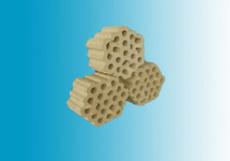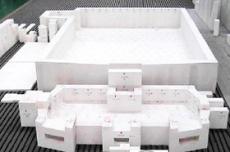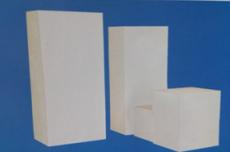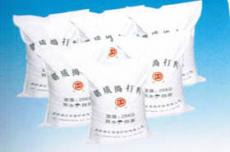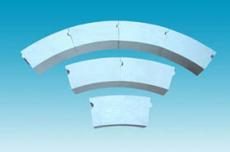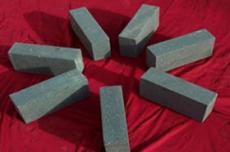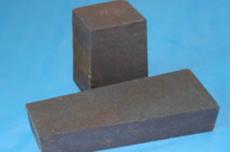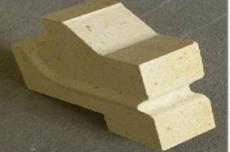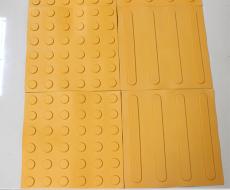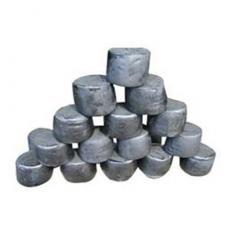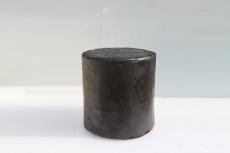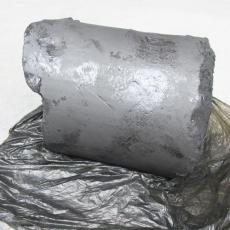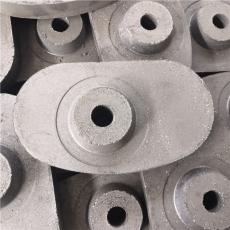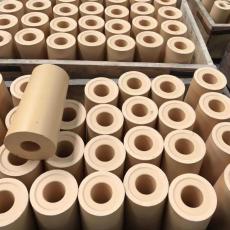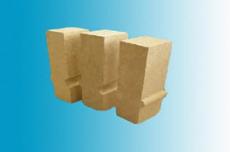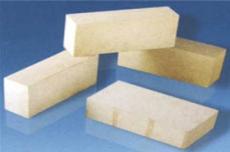
The reverberatory furnace is a traditional thermal equipment for copper concentrate smelting. The reverberatory furnace is a horizontal rectangular furnace. The reverberatory furnace body consists of a furnace base, a furnace bottom, a furnace wall, a furnace top and a reinforcement bracket, etc. It also includes a converter slag injection port, a matte discharge port, a slag discharge port, a flue gas duct, etc. The refractory bricks used in its furnace lining vary according to the different parts.
01 Furnace base
The reverberatory furnace is a bulky equipment. The total mass of the furnace building materials alone is 1500~3000t. The weight of the furnace charge and melt in the furnace varies with the furnace capacity. The load on the ground is very large, and there must be a good furnace base to evenly transfer the load to the ground, otherwise the furnace may sink locally and crack the brickwork. The furnace base is generally built with coarse stone, block stone concrete or brick concrete. The most solid one is built with slag or furnace support and concrete. The depth of the furnace base is 2~3m. The surface of the furnace base is either flush with the ground or above the ground level. If it is flush with the ground, there must be an underground tunnel to release and transport matte and slag. The choice of furnace base elevation depends on the method of releasing the melt. If the hot slag method is used, the furnace base elevation needs to be increased; if the water quenching slag method is used, the elevation can be reduced accordingly.
02 Furnace bottom
The furnace bottom is under high temperature for a long time, under great pressure, and is constantly eroded and chemically attacked by the melt. Therefore, appropriate refractory materials should be selected to construct the furnace bottom to extend the life of the reverberatory furnace and improve productivity. The furnace bottom is usually sintered with quartz, that is, it is built with ground quartz stone or natural river sand, with a particle size of no more than 2mm and a SiO2 content of no less than 92% to 96%. The thickness of the furnace bottom is generally 0.6 to 1.2m. First, a 50 to 100mm thick refractory mud is laid on the furnace base to separate it from the furnace base so that it can expand freely when heated. Then, quartz sand is mixed into refractory mud accounting for 5% to 8% of its weight, and 5% to 7% of water is added to moisten it. This mixture is spread on the refractory mud layer for every 100 to 120 mm thick tamping, and then spread and tamped again, and 5 to 7 layers are laid. Afterwards, heating and sintering, the temperature rises evenly and slowly from low to high according to the heating curve. When it reaches 1773 to 1873K, the furnace bottom is burned into a whole, which is called a sintering furnace bottom. The furnace bottom can also be built with silicon bricks according to the reverse arch, and can also be sintered with broken converter slag and waste slag. When smelting low-grade matte, due to the large amount of Fe3O4, the siliceous furnace bottom is easily corroded, so a magnesia-iron sintering furnace bottom is used instead. The magnesia-iron sintering furnace bottom is made of magnesia sand containing more than MgO80%, iron oxide powder, i.e., Fe3O4, Fe2O3, etc., mixed with brine, tamped in layers, and then heated and sintered. This kind of furnace bottom is not only not corroded by Fe3O4 in the melt, but also forms a protective layer of Fe3O4 on the bottom surface of the furnace, which prolongs the life of the furnace bottom.
03 Furnace wall
The furnace wall is built directly on the furnace foundation, generally made of silica bricks. Since silica bricks are easily corroded by slag, the inner side of the furnace wall below the slag line is lined with magnesia bricks, chrome-magnesia bricks or magnesia-alumina bricks, and clay bricks or silica bricks are built. The furnace wall above the slag line is built with silica bricks, magnesia bricks, chrome-magnesia bricks or magnesia-alumina bricks. Generally, the wall above the slag line is built into a straight wall, and the wall below the slag line is built into a stepped material slope to enhance the corrosion resistance of the furnace wall to the melt. The thickness of the upper part of the furnace wall is generally 500~1000mm, and the thickness of the lower part is 750~1500mm. When building the furnace wall inside the furnace, an expansion joint with a width of 25~30mm is left every 300mm to allow the brickwork to expand freely when heated. The front wall of the reverberatory furnace is provided with a rectangular channel for installing the burner, the middle of the side wall of the furnace tail is provided with a matte discharge channel, the slag discharge channel is provided at the end wall or side wall of the furnace tail, and the converter slag injection channel is provided at the end wall or side wall of the furnace head.
04 Furnace roof
The furnace roof of the reverberatory furnace has two types: arched roof and suspended roof. The arched roof is generally composed of several arch sections of 3 to 7 meters in length. The arch section close to the furnace head is shorter and thicker because it is in the high temperature zone; the arch section at the tail of the furnace is longer than the arch section at the head, and a 50 to 70 mm expansion joint is left between each arch section. The arch height is usually 1/9 to 1/10 of the furnace width, and the curvature radius of the arch is usually 1.2 to 1.3 times the furnace width. The arched roof is built on the arch seat bricks located in the channel steel beam of the furnace side wall, and the channel steel is fixed on the vertically fastened columns beside the furnace. Therefore, the weight of the furnace roof does not fall on the side wall. The arched roof is generally made of silicon bricks. The silica brick furnace roof is lighter and cheaper than magnesia brick. However, silica bricks are easily corroded by alkaline dust, which limits the width of the reverberatory furnace. The suspended roof is connected to a brick group by embedding a 2-3mm thick iron plate between 4-8 bricks. When the furnace roof is heated, the iron plate melts and the bricks are bonded to each other. The brick group uses heavy and highly refractory magnesia bricks, chrome-magnesia bricks or magnesia-aluminum bricks. All brick groups are independently hung on the horizontal iron frame, and the width of the furnace is wider than the arched roof. The furnace roof of the thrust-type suspended ceiling structure is actually a combination of the arched roof and the suspended ceiling. Its arch height is 1140mm and the arch curvature radius is 7790mm. Because the rails of the suspended brick group are fixed with a clamping rod and a pressure beam, the furnace roof is constrained during thermal expansion and contraction, so that each brick group does not deform much, thereby reducing the ups and downs of the furnace roof and extending its life.
05 Reinforcement bracket
The reinforcement bracket of the reverberatory furnace consists of pillars standing around the furnace and tie rods running across the top of the furnace and below the reverberatory furnace. I-beam or channel steel pillars are combined in pairs, with a spacing of 1 to 1.2 mm between the pillars. 38 to 50 mm round steel is used as the tie rod, with threads at both ends, fixed on the paired pillars. When the reverberatory furnace is heated, the nut on the tie rod is rotated in time to adjust the tension to prevent the pillars and brickwork from deforming. A 25 mm gap is usually left between the pillars and the furnace wall for the brickwork to expand due to heat.
Converter slag injection port The converter slag injection port is located on one side of the furnace head end wall or on the side wall near the furnace head, with a size of 300 mm*390 mm. When injecting converter slag, it generally enters the receiving container first and then flows into the injection port through the flow channel. The inclination of the flow channel is generally 3° to 5°.
06 Matte discharge port
The matte discharge port is generally located at the rear of the side wall, and there are two types: straight channel type and siphon type. The straight channel type leaves a small hole at the junction of the side wall and the bottom of the furnace. The inner wall of the small hole is made of aluminum-magnesium bricks, and the outer wall is pressed with a cast iron plate. A small hole with a diameter of 45mm is left on the plate, which is aligned with the brickwork. When matte is not placed, it is blocked with refractory mud. When matte is placed, the hole is opened. Generally, 2 to 3 matte discharge ports are set up and used in turn. In order to reduce the trouble of opening and blocking, the siphon port is used to discharge matte. The siphon port is easy to operate and has low labor intensity. It is inspected once a year.
07 Slag outlet
The slag outlet is generally located on the rear end wall of the furnace, and there are also some located on the side wall of the tail. The slag outlet should be located above the matte surface, generally 0.8 to 1.2m away from the bottom of the furnace, and its cross-section is 0.5mX0.9m. The lining near the slag outlet is built with aluminum-magnesium bricks, magnesium bricks or chrome-magnesium bricks. A slag dam is built under the slag outlet with refractory mud to adjust the height of the slag surface.
08 Smoke Exhaust
The smoke exhaust duct is located at the end of the furnace. There are two types of flue: vertical flue and inclined flue. The latter has less resistance to airflow, so smoke and dust can settle here, reducing the smoke and dust rate. The side walls of the flue are made of refractory bricks, and the top is also made of suspended ceiling. In order to reduce flue failure, the flue is usually built wide and short. In order to adjust the airflow, a gate is installed in the flue.
